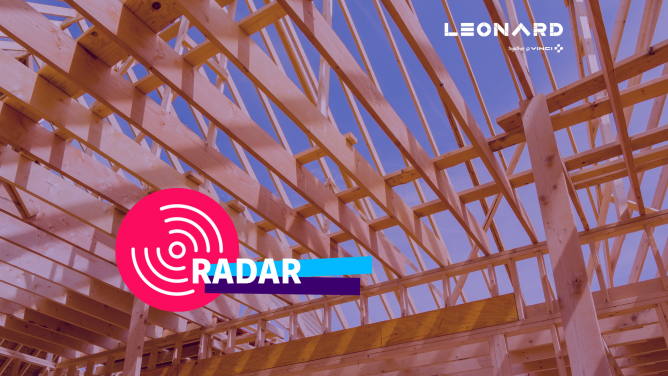“The upswing in activity is particularly visible in the construction, capital goods and other industrial product manufacturing sectors”. If the latest study released by the DARES on 20 May is any indication, construction is one of the sectors in which the rebound is most dynamic. At first glance, this is good news — however, the challenges of releasing lockdown and implementing public health measures are complex and need to be seen in perspective.
The FNTP estimated that, from as early as end-March, 80% of France’s construction sites had become inactive. Since then, they have begun reopening, but piecemeal, as we discussed in our article “Covid-19 and construction sites: chaos and inevitable shifts” last month. It has to be said that the challenges are numerous: managing people at risk, reorganising work, new management methods, developing signage systems, etc. Each of these adjustments represents a new public health challenge, in a context where the building sector considerably stepped up its occupational health and safety measures over the last decade. Over the last 10 years, according to the French National Health Insurance Fund, preventive measures have helped reduce the number of occupational accidents by 29%. The challenge thus lies in continuing to limit the risks for construction workers, with the coronavirus on the scene. To achieve this, many start-ups are already in the front lines.
At Leonard, weidentify, select and support solutions that will transform the offer and professions in the fields of construction, energy, mobility and real estate. These past few weeks, we have directed our exploration work towards identifying value propositions from start-ups, scale-ups or SMEs that are useful in taking up the challenge of safely reopening construction sites. Below, we share our main observations. Two key ideas, in particular, caught our attention: physical distancing at construction sites and remote operation and maintenance.
PHYSICAL DISTANCING
In its Health Satefy Recommandations Guide released a few weeks ago, the OPPBTP puts compliance with the minimum distance of one meter between construction workers at the top of the list of general instructions. The instruction is as imperative as it is difficult to implement, however, when dealing with a construction site. In order to better identify the risks of close quarters, the start-up Smartvid.io is developing an AI-assisted image analysis and recognition solution. By collecting and processing images taken by cameras or smartphones, the start-up, also a member of Leonard’s CATALYST programme, can generate alerts.
In another approach, some companies are planning to equip workers to help them keep the right distances, in real time. This is the case of Ottogee, based in the United States, with its technology known as PACT (Proximity Alert and Contact Tracing). In this solution, workers wear a connected wristband that alerts them with a vibration if they get too close to each other. In the event of extended contact, their movements and interactions are tracked and analysed to prevent the possible spread of the virus. In the same vein, the Belgian company Rombit in recent weeks added new features to its existing technology, Romware ONE. This wristband, initially designed to help prevent accidents in the workplace and improve productivity (by detecting accidents and collisions, preventing worker isolation, certifications, etc.), now enables workers to keep their distance in real time thanks to sound signals, and to accurately track their movements. Ubudu, a company that has been providing expert localisation solutions since 2011, has also evolved its technology and now offers the Ubudu Social Distancing Assistant (SDA). Currently being deployed by VINCI Autoroutes, Ubudu’s technology connects up the portable boxes with which each worker is equipped, enabling real-time information on how well they maintain their physical distances. Lastly, the start-up Wakecap offers construction hats for connected worksites, which can collect and process in real time data related to the location of workers, and thus identify possible transmission chains.
REMOTE OPERATIONS
Apart from these solutions, one of the major levers to ensure compliance with virus-halting behaviours is obviously to scale back the number of people at the worksites. Distance working, which was already a major topic on the table in the construction sector before the Covid-19 crisis, is in this sense likely to develop. In France, the start-up ViiBE has been developing solutions for the past 3 years to help reduce professional travel. In the current context, their value proposition has gained a whole new sheen. Without requiring the download of any application, ViiBE makes it possible to put an on-site technician in video contact with an expert who is located remotely. The idea is to cut back on experts’ servicing and travel times, and in so doing, limit the risk of the virus’ further spreading. HoloBuilder, a start-up founded in 2016 and a member of CATALYST, similarly offers 360-degree views thanks to which progress at construction sites can be monitored from a distance. Sensat, a start-up founded in 2015 and based in London, uses drone images to help companies manage their construction sites without having to physically travel to them.
By enabling remote steering and collaboration, such tools help enable and speed up the return to business in the construction sector. In the space of just a few weeks, what was until now a source of leverage for productivity has thus become an essential tool in the fight against the spread of the virus, and an illustration of how construction site management could look in the future.


